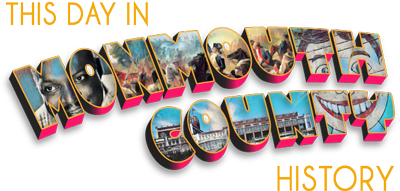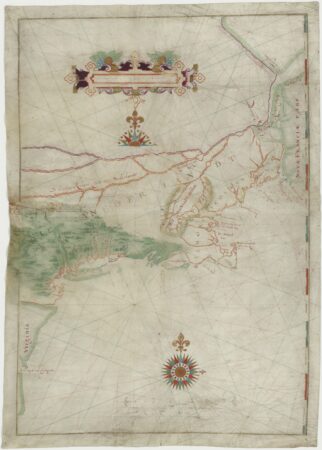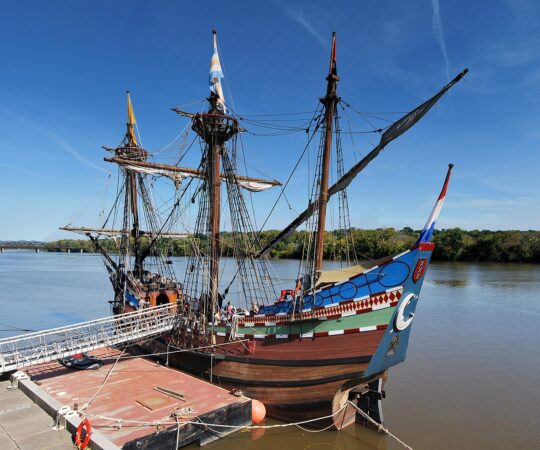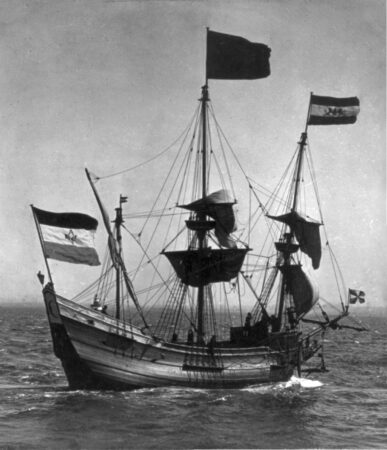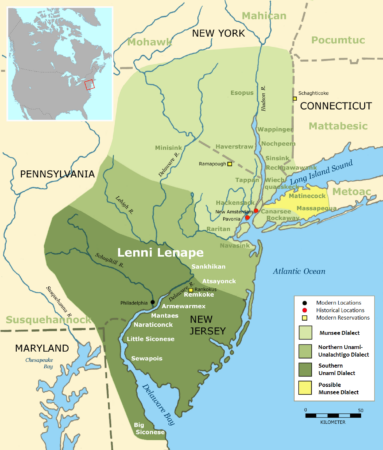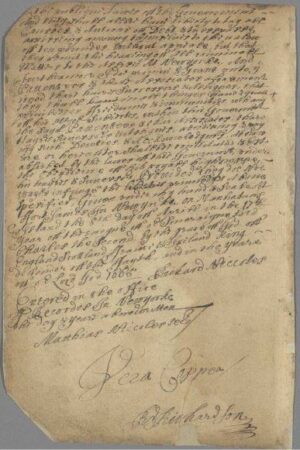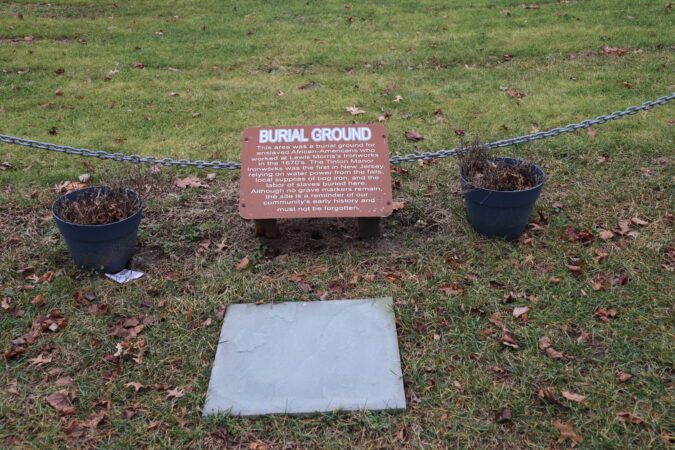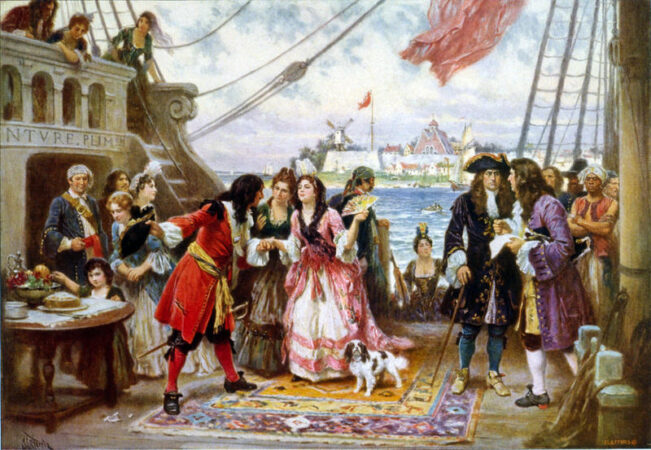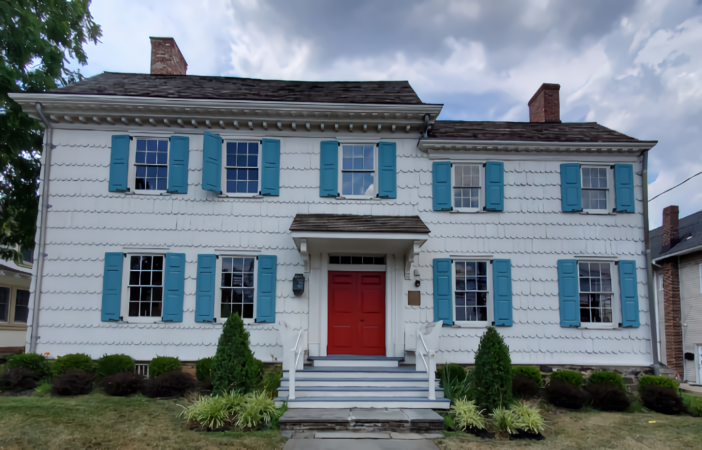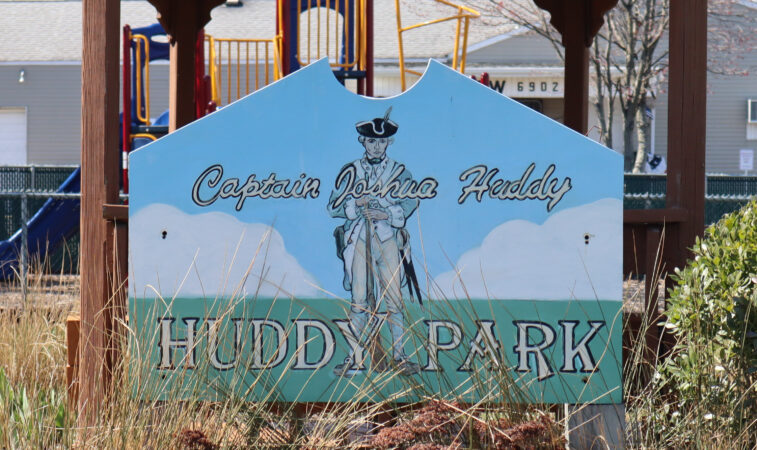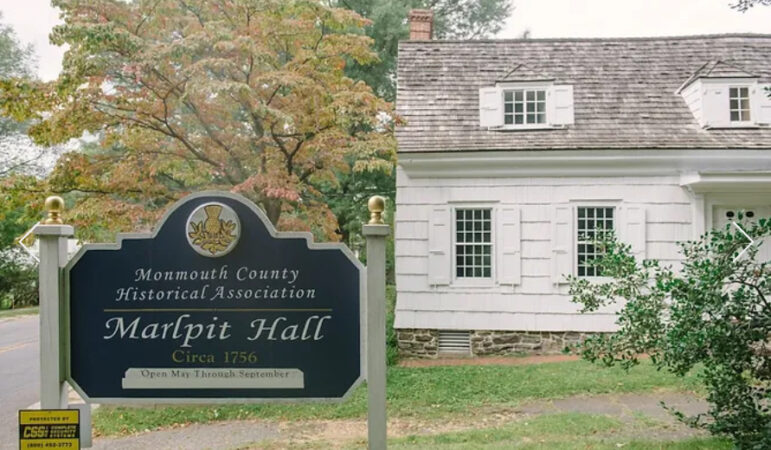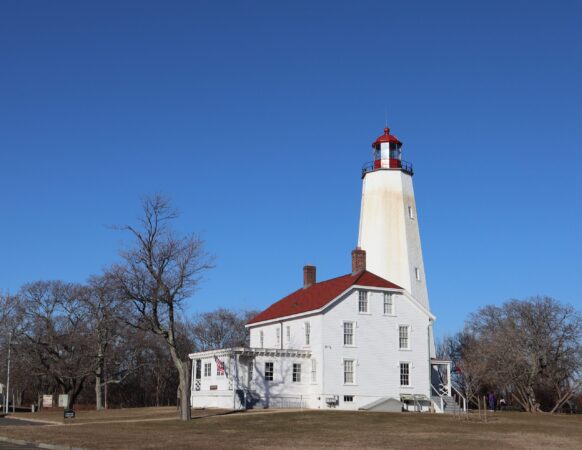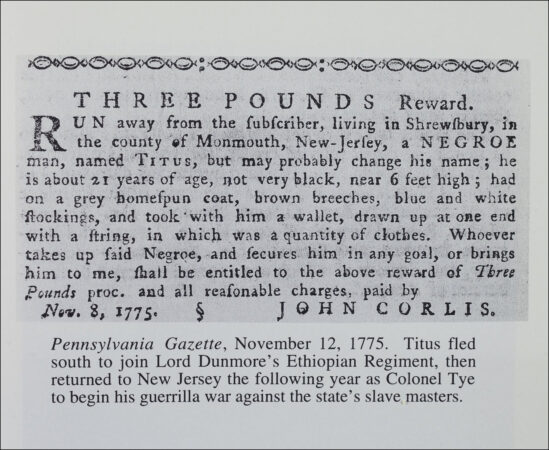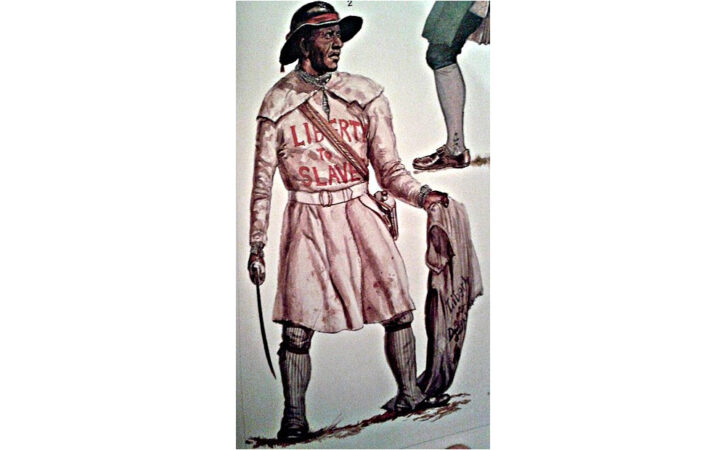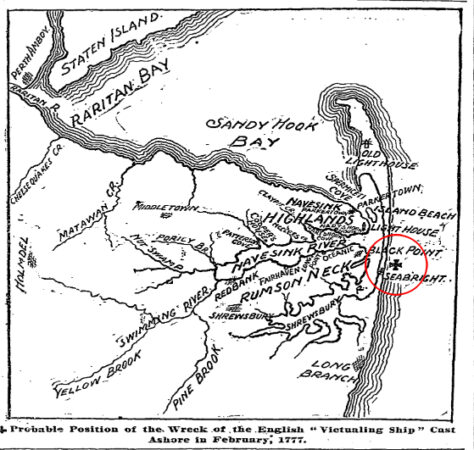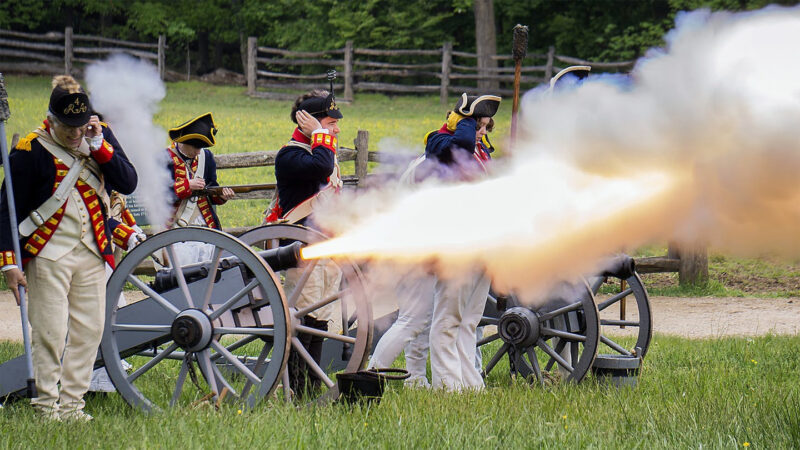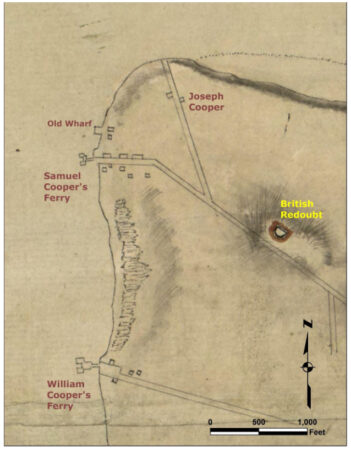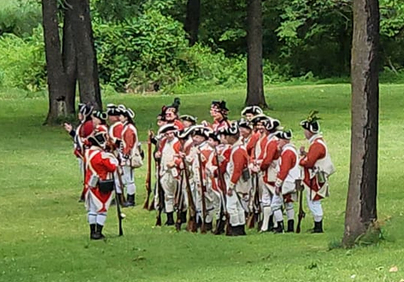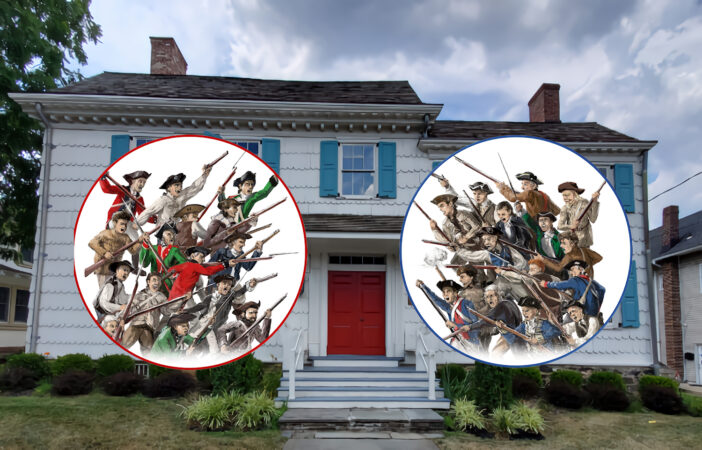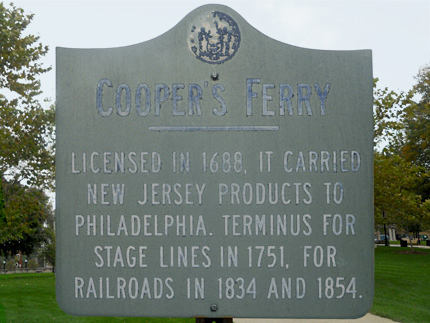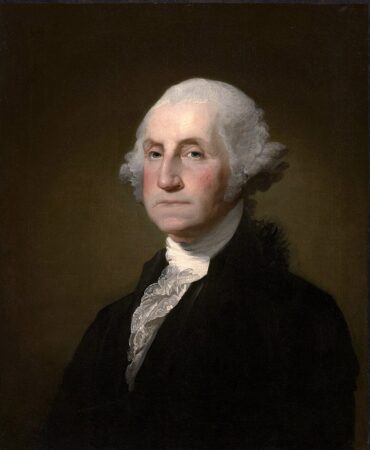Monmouth County Timeline
January 17, 1524
The European Explorers of New Jersey
The earliest European explorers of the Americas never caught even a glimpse of any part of the northern Atlantic coast. Christopher Columbus explored and settled various Caribbean nations, while Amerigo Vespucci's explorations appear to have been mostly of South America, specifically,...
September 2, 1609
Henry Hudson First Arrives at Navesink Highlands
On September 2, 1609, Henry Hudson approached the Navesink Highlands area. A crew member, Robert Juet, kept a daily journal of this famous exploration, and entered in his journal his impression: 'This is a very good land to fall with,...
September 6, 1609
Henry Hudson’s Half Moon Explores Our Region
On September 6, 1609, the Half Moon, captained by Henry Hudson, after sailing past Highlands, is said to have landed on the shores of present-day Keansburg (although some historians argue that the landing took place at the tip of Sandy...
March 25, 1664
Lenape Chief Sells Navesink Highlands
On March 25, 1664, Popamora, chief of the Munsey-speaking Lenape Indians of the Navesink region, executed the sale of the neck of land stretching from Sandy Hook and Rocky Point to Keansburg on the west, and to the Navesink Highlands...
April 8, 1665
The Monmouth Patent
Editor’s note: The author would like to thank Yvette Florio Lane, Ph.D., for her assistance with this important Timeline story. On April 8, 1665, the English deputy-governor of New Amsterdam, Colonel Richard Nicolls, granted 12 white men, mostly Quakers from...
December 29, 1675
How Enslavement Came to Monmouth County
Editor's note: On December 29, 1675, the entrepreneur Lewis Morris purchased a one-half interest in a bog iron property in Monmouth County near Colts Neck. He built an iron forge on the river in what today is Tinton Falls, and...
January 3, 1703
William Leeds and Captain Kidd: Pious Men of God or Treacherous Pirates?
Monmouth Timeline story by Rick Burton On Wednesday, January 3, 1703, William Leeds Jr., a wealthy middle-aged Middletown resident, fully drew the mantle of God upon himself as he was baptized as a Christian. The rites of baptism have long...
June 3, 1723
The Burrowes Mansion Museum
Editor's note: The following text and images are provided by and used with permission from the Matawan Historical Society. The Burrowes Mansion was built in 1723 by John Bowne III. It is one of Monmouth County’s most important early...
November 8, 1735
A Timeline of Patriot Martyr Joshua Huddy
Joshua Huddy was a Revolutionary War soldier who became renowned through his untimely death: he was hung by American Loyalists at Highlands in 1782, months after the Battle of Yorktown, the last major military engagement of the war. Patriot outrage...
November 4, 1762
Marlpit Hall, c. 1762
Marlpit Hall, c. 1762 137 Kings Highway Middletown, NJ 07748 While four of the five historical houses owned by the Monmouth County Historical Association (MCHA) have ties to Patriots of the American Revolution, this house represents the residence of a...
June 11, 1764
Sandy Hook Is America’s Oldest Continuously Operating Lighthouse
Lighthouses have been aiding navigators for more than 2,000 years. The first lighthouse in America was the Boston Light, built in 1716 at Boston Harbor. Sandy Hook Lighthouse was the fifth lighthouse built in the United States, but it is...
November 8, 1775
A Timeline of the Escaped Slave Titus who Became the Dreaded Loyalist Raider Colonel Tye
On November 8, 1775, a 22-year-old slave named Titus ran away from his owner and master, John Corlies of Colts Neck. Corlies was a Quaker who did not agree with Monmouth County Quaker views on the handling of slaves. Quakers during...
November 15, 1775
Titus Becomes Tye in Lord Dunmore’s Ethiopian Regiment of Black Loyalist Soldiers
On November 15, 1775, the former Colts Neck slave named Titus, now calling himself simply "Tye," took part in the first armed conflict in American history involving an organized unit of African American soldiers. But they were fighting for the...
February 13, 1777
Battle of the Navesink
On February 13, 1777, the militia of Monmouth County suffered “most severely” in an engagement known as the Battle of the Navesink, which took place in the area that is now Rumson and Highlands, and Sea Bright. Particularly during...
September 24, 1777
New Jersey Militia Artillery Captain Joshua Huddy
In 1776, Huddy joined the New Jersey militia and on September 24, 1777, became a captain of artillery. That year, he gladly pulled the rope to hang Stephen Edwards, a New Jerseyan who had been spying for the British. After...
May 3, 1778
Battle of Monmouth – How It Begins
On May 3, 1778, the British establish a post at Cooper's Ferry, near where Camden is today, to protect wood cutters. The British army in Philadelphia has been ordered to evacuate the city, to focus resources on their strongholds in...
May 14, 1778
British Army Ships Supplies to New York Ahead of Philadelphia Evacuation
On May 14, 1778, the British army prepares to move across the Delaware river by packing heavy baggage to be shipped to New York. In six weeks, they will encounter George Washington's Continental Army, aided by New Jersey militia (re-enactors...
May 27, 1778
The Raid on the Burrowes Mansion
Editor’s note: The following text and image are provided by and used with permission of the author and the Matawan Historical Society, with the exception of the Monmouth County Loyalists & Patriots, ©2023 Charlie Swerdlow, commissioned by Monmouth Timeline. The...
May 29, 1778
British Army Begins Relocation Process from Philadelphia to New York City
On May 29, 1778, the British army begins the process of evacuating Philadelphia, and relocating to New York City, by deploying two regiments across the river at Cooper's Ferry, near Camden, to reinforce the garrison there. New Jersey militia are...
June 1, 1778
The British Prepare to Enter New Jersey at Cooper’s Ferry
With orders to relocate to New York City, the British army spends two weeks establishing a post at Cooper's Ferry, near Camden, across the Delaware River from Philadelphia. On June 1, 1778, the British begin moving wagons and provisions across...
